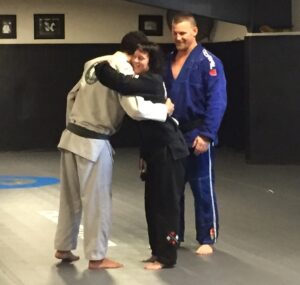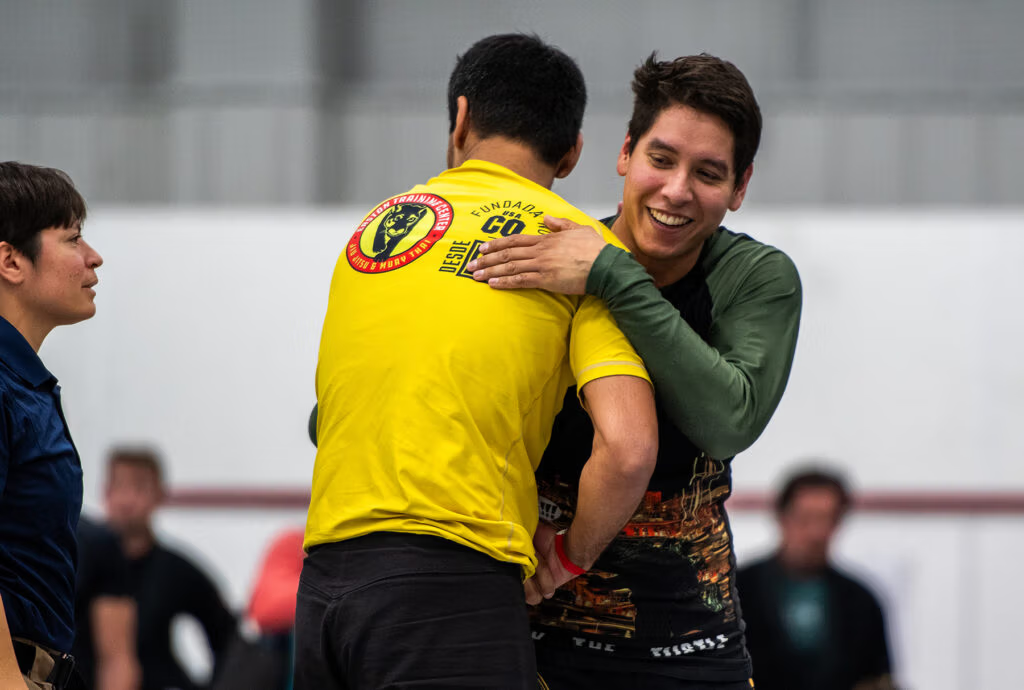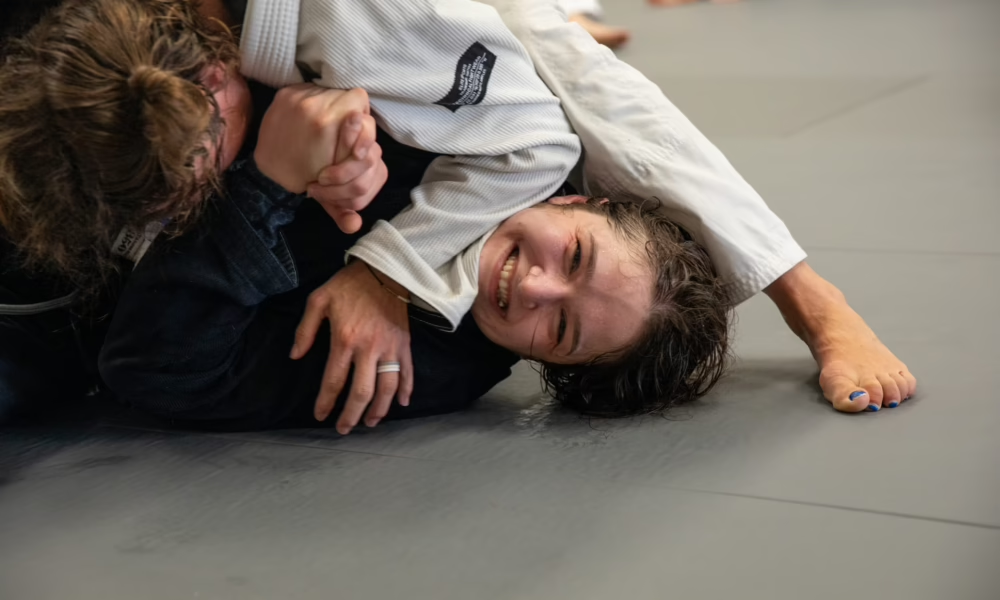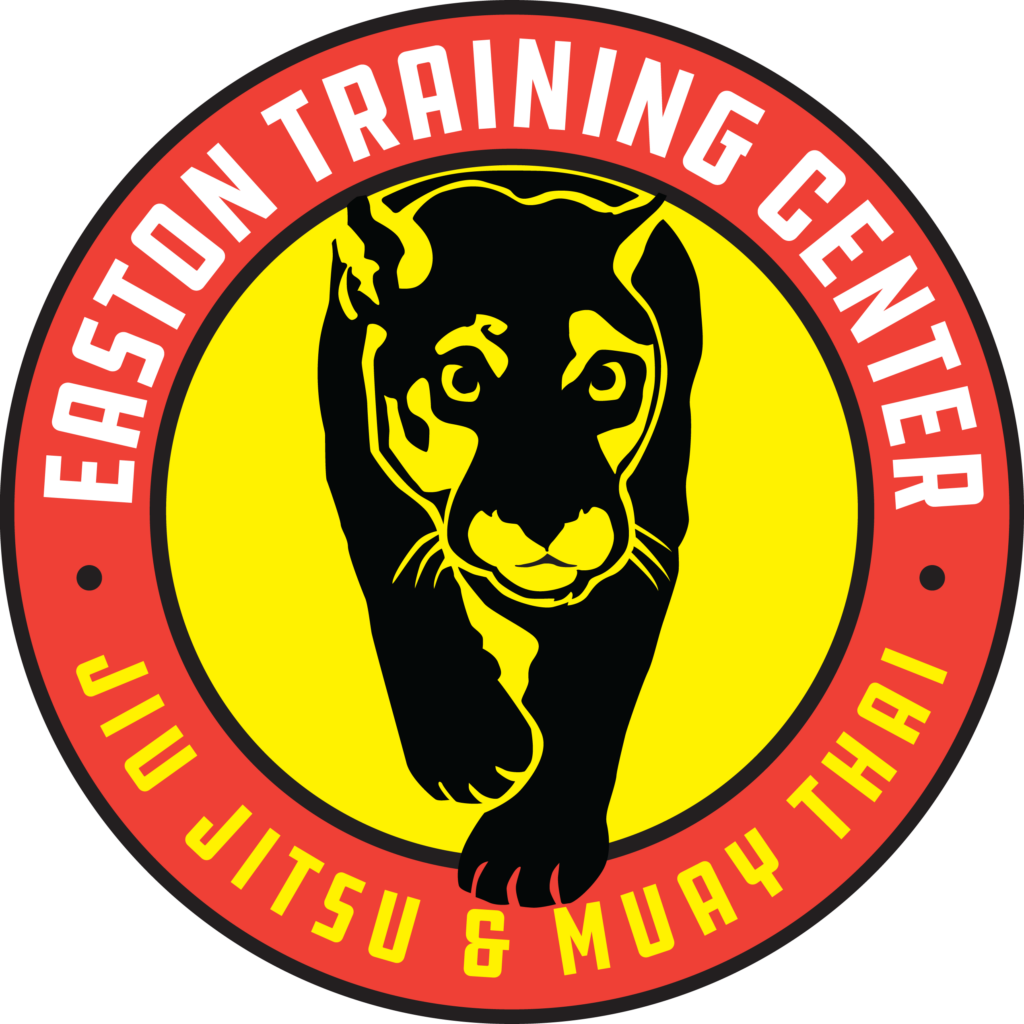If you train regularly at Easton Training Center Boulder, you undoubtedly know Professor Heather Reynolds. One of a small, but ever-growing cadre of female black belts, Heather is a fixture at the Boulder academy. She is a diminutive dynamo–full of infectious enthusiasm and a possessed of a deeply genuine, straightforward nature that I’ve long admired. I recently sat down with Heather to talk about her Jiu Jitsu, her philosophy, and what she’s learned on her journey.
Heather received her black belt from Professor Amal Easton in 2013, and he gave her her first stripe in June 2016. A life-long athlete, Heather thrives on constant activity. The daughter of a Vietnam War veteran who struggled with PTSD, she had a volatile childhood, and has at times battled with her own anger and emotions. As she grew older, Heather found solace and stability in an active lifestyle. She calls exercise her “healthy and socially acceptable addiction.” With a “heart full of gumption and a head that says ‘don’t quit,’” Heather has spent her life pushing her physical limits. A former professional downhill mountain biker, she’s also been a high-level competitor in Olympic Weightlifting and boxing, and an avid dirt biker and snowboarder.
She got her start in Brazilian Jiu Jitsu in 1999, shortly after retiring from mountain bike racing. She was at the gym for a workout, when her friend Jeff Suskin (who is today another an Easton black belt) walked in with an armful of Gracie magazines. He knew she’d been looking for a new challenge, and that very day, they rode their bikes over to Easton Brazilian Jiu Jitsu, where she took her first class. Heather was quickly hooked, and found that her hard-won strength and athleticism translated well into her new sport.
Easton Brazilian Jiu Jitsu in 1999 was a different place than it is now. When she first began training, Heather found herself in the challenging position of being the only woman on the mat. As such, she constantly felt that she had to prove herself, to keep pace with the men and show them that she belonged. She quotes Ronda Rousey, who’s said that as a female fighter, one has to “work twice as hard to get half as much respect.” As the fourth woman black belt under Amal Easton, it’s clear that Heather has more than earned her place. But it hasn’t always been an easy road. “Starting out,” she says, “I misunderstood how to progress and learn. I thought that aggressive training was the sole path to promotion and advancement.” As a young athlete, she had a tendency to get caught up in that mindset, and looking back, sees that her aggression was much akin to anger. “That attitude makes a bad training partner, and I was in that vortex for so long. I’m sure that I was the reason that some people walked out the door. It didn’t make me feel good, but it took a while to get out of that.”

Over time, Heather has found training to be a crucible for personal growth and learning. It’s made her ask herself difficult questions like, “How do I behave under stress? How can I control my fears and anxieties? How do I tamp down the anger when someone brings it out of me?” Sometimes she didn’t like her answers. But countless hours on the mat have helped her to strive toward her better self, and her passion for her training has always propelled her forward.
This passion (and no small degree of stubbornness) has carried her through a host of other challenges on the long road to black belt. In the early 2000s, a motorcycle accident left her with a major knee injury. With damage to her ACL, MCL, meniscus, and femur, she was suddenly cut down from her physical prime, and unable to do many of her favorite things. It was two full years of physical therapy, careful treatment, and slowly building up her exercise routine before the knee was fully recovered. Looking back on this injury and myriad others, Heather says, “There’s a period after an injury where you question your need to do Jiu Jitsu. Is it worth it? And every time, the answer is yes.”
The arduous healing process made Heather more conscious of her health and the importance of longevity. As a younger athlete, she was so attached to ego and the need to prove her worth that she would often push herself into dangerous situations while training. Now her focus has shifted to taking good care of her training partners, and choosing partners who will do the same for her. Heather explains, “Jiu Jitsu teaches people to let go of ego. There’s no heavy bag to work on, so it always requires a training partner. If you hurt them and alienate them, you’re going to be very lonely on the mat.” This attitude of respect and responsibility is a carefully cultivated part of the Easton BJJ culture, and one that is important to anyone who’s made Jiu Jitsu a key part of their life.
Physically, taking care of partners means training within your ability, and not attempting things you’re not sure you can execute safely. It means letting go of impulsivity and staying in control even when someone makes you angry during a roll. Taking care of a partner’s body in training is something that any Jiu Jitsu player must learn to truly be great. But Heather takes it a step further in her training, and thinks constantly about taking care of her partners mentally as well. “I try to bring emotional intelligence onto the mat, and see what someone else wants from their training. It’s my responsibility to figure that out. I want everyone to leave and feel better for having had contact with me.”

Whereas in the past, she may have been the reason someone quit, she says,
“Now I hope that I’m the reason that someone stays. That when someone is having a hard night, their experience with me is the reason that they choose to stick it out. Some of my best nights, the training is not for me. I decide that I want to make it about someone else. Sometimes you can see it in someone’s eyes, that they’re one hard roll away from giving up. You don’t know what someone is going through–there might be a myriad of life circumstances that are horrific. If you can be the one positive thing in their day, that’s awesome. I reflect on the times where someone made a difference for me, and I’m happy to be in a position to give back and make a difference for someone else.” Heather’s belief is that emotional intelligence and the pursuit thereof is what really makes people improve. Anyone can start out with strength and athleticism, and those can be great assets to any Jiu Jitsu player. But the person you really want to roll with is someone who is emotionally balanced and well controlled. Someone who you can train with for an hour, and be no worse for wear.
To this end, Heather points out that Jiu Jitsu is like alcohol. It can magnify whatever you are already feeling. It intensifies anger, hostility, and sadness–but of course happiness, too. Recognizing this has helped her find balance. She says, “Some people can check their bad day at the door, but a lot of people can’t. If I’m angry, I choose something else for my workout, like a long bike ride. If I’m sad, I can’t go to Jiu Jitsu. Vulnerability is dangerous for your Jiu Jitsu mojo. If you get beat that day, you’re going to have a hard time getting back on the horse.” Where her younger self was doggedly single-minded in her pursuit of her sport of choice, now she makes space for a healthy variety. Where her priority was once The Grind above all else, now it’s about fun, learning, and growth. She chooses Jiu Jitsu when she knows she can bring the right energy to the mat.
“I love to play,” says Heather. “I’m obsessed with working out because it’s so much fun. I love when your body can acquire skills and master them–isn’t that one of the reasons to be alive?” Her playful nature on the mat makes her gravitate toward others with a similar approach. Often this means having the most fun when she is training with the teenagers. “Kids,” she says, “haven’t learned to be ashamed of trying something creative and new. Their pure love of the game is is untainted by criticism and judgment.” It’s in this playful, creative space that she sees her Jiu Jitsu really evolve.
“I submit to learning,” she says with a smile. This pure love for discovery and development seems to be a common thread among people who’ve made it this far in Jiu Jitsu. This is the attitude that really makes the sport enjoyable and sustainable over time. In a recent conversation with her friend and fellow Easton black belt, Reid Delman, Reid pointed out that an aging athlete has two choices: quit, or adapt. For Heather and Reid, quitting isn’t an option. It therefore becomes important to respect the limitations of a changing body, and choose to out-think rather than out-muscle. Heather says, “I used to seethe over who tapped me. It used to be a badge of honor to go home without being tapped. Now when I go through a whole night not getting tapped, I think, ‘I didn’t risk anything, I didn’t train my best. I was too insecure to risk failure, and didn’t put myself in a position where I could’ve learned.’” Letting go of her need to win every match, and being open to learning new things from even her youngest and least experienced training partners has helped her grow into a better player and a stronger person.
You are in good hands
Starting anything new can be intimidating, but rest assured our team will help you feel comfortable from day 1.
By entering your phone number, you consent to receive SMS or MMS messages from Easton Training Center. To opt out of future messages, text STOP at any time. View our privacy policy. Msg. and Data rates apply.

What Happens After?
Get a Text
You receive a text from our friendly team to coordinate a convenient time for you.
30-Minute Orientation
You receive a free one-on-one 30-minute orientation for the program you chose.
1-Hour Beginner's Class
Take a 1-hour beginner’s class, and drill the technique with a friendly partner. No live sparring.







